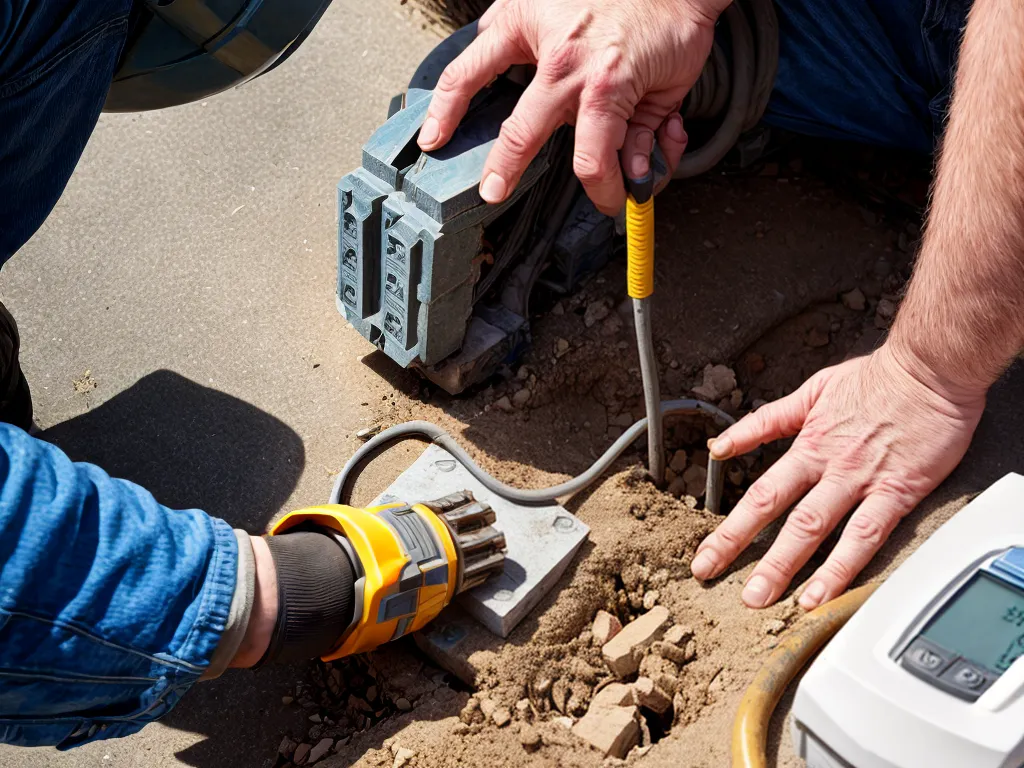
How to Troubleshoot Faulty Grounding in Commercial Buildings
Introduction
Grounding systems are a critical component of electrical safety in commercial buildings. Proper grounding provides a low-resistance path for fault currents to flow, which reduces the risk of electric shock and protects sensitive electronic equipment. However, grounding issues can develop over time due to corrosion, loose connections, or damage. As the commercial electrician, it is my responsibility to periodically test and troubleshoot grounding systems to verify their integrity. In this article, I will provide an in-depth overview of how to troubleshoot faulty or inadequate grounding in commercial buildings.
Inspect the Service Grounding Electrode System
The first step is to visually inspect the service grounding electrode system. This includes the ground rods, ground ring, ufer ground, and connections to metallic water and gas piping systems that serve as grounding electrodes. Look for:
- Loose, corroded, or damaged connections
- Broken ground rods or conductors
- Signs of corrosion on ground rods and conductors
- Inadequate spacing between ground rods
- Lack of required grounding electrodes
Any issues identified should be repaired immediately to re-establish a solid grounding electrode system.
Test Ground Resistance
The resistance of the grounding electrode system must be tested to verify it meets requirements, which is typically 25 ohms or less for commercial buildings. This requires using a ground resistance tester.
To test, I first disconnect the main grounding electrode conductor from the service neutral at the main panel. I take readings between the system ground and a reference ground rod placed at least 30 feet away. The ground resistance should not exceed 25 ohms.
If the resistance is too high, I drive additional ground rods to lower it. I then reconnect the main grounding electrode conductor. Annual ground resistance testing is recommended.
Inspect the Main Bonding Jumper
The main bonding jumper connects the neutral and ground buses in the main service panel. This creates the ground reference for the electrical system.
I inspect the bonding jumper to verify it is present and properly secured to the neutral and ground buses. Any corrosion or looseness must be addressed.
Check for Proper Grounding of Equipment
All non-current carrying conductive materials, such as enclosures and raceways, must be properly bonded and grounded.
I inspect the grounding wires and connections of:
- Service panel enclosures
- Subpanels
- Metallic conduit runs
- Water meters, gas pipes, and building steel
This ensures electrical faults have a low-resistance path to ground and do not energize equipment enclosures.
Test Receptacle Grounding
Receptacle grounding issues are a common problem in commercial buildings. I test a sample of duplex receptacles in each area for proper grounding. This requires using a receptacle tester or multimeter to check for correct voltage between the hot, neutral, and ground.
Any ungrounded receptacles must be repaired. GFCI protection can serve as a temporary solution until repairs are completed.
Isolate Ground Faults
If ground faults are indicated but the location is unknown, I systematically isolate circuits or sections of the building to find the source. I first check for faulty appliances on branch circuits.
For ground faults on service or feeder circuits, I divide the system into halves and determine whether the fault is on the upper or lower half. I continue subdividing the system until the faulty circuit is identified.
Conclusion
Troubleshooting grounding issues requires meticulous inspection, testing, and a systematic approach. Proper grounding is essential for safety and protecting sensitive equipment in commercial facilities. Following the tips in this article can help identify and resolve grounding problems. Let me know if you have any other questions!